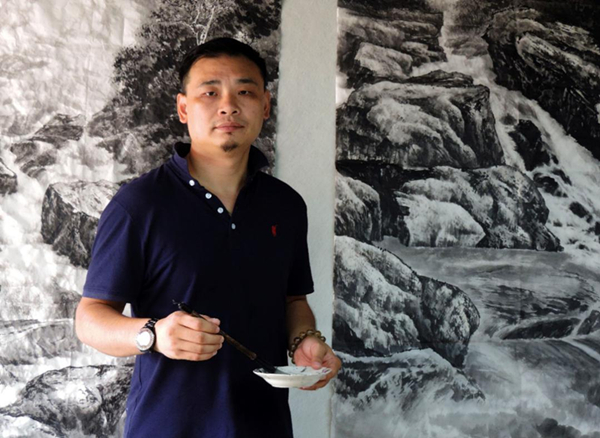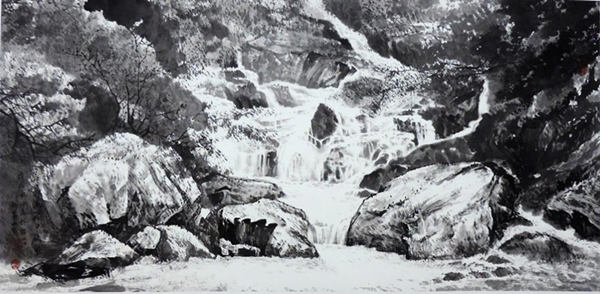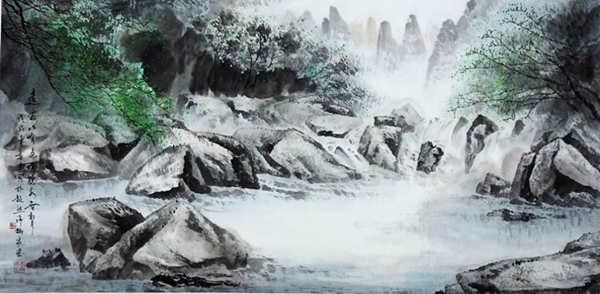Li Liujun: When Chinese spirit meets Western technique

Li Liujun in front of his ink wash paintings. [Photo provided to en.gxzf.gov.cn]
Li Liujun, an accomplished painter best known for applying Western realism painting techniques to a Chinese aesthetic context, has given a full play to his talent in recent works depicting the tranquil creeks in Guilin's mountainous areas.
Not only does the series reveal the distinctive features of the primeval forest in northern Guangxi Zhuang autonomous region, but truthfully presents the creeks, waterfalls, stones and vines with detailed strokes of light and color.

The ink wash painting by Li Liujun depicts a creek in Guilin's mountainous area. [Photo provided to en.gxzf.gov.cn]
Each of his ink wash paintings uses tonality and shading, from deep black to silvery gray, achieved by varying the ink density just enough to make every brush stroke fully charged with meaning, and cause form, texture and effect to be felt.
Li's mature grasp of the Chinese freehand style of xieyi, which emphasizes depicting a feeling of poetry through loose brushwork, also allows the paintings to immerse viewers in a quiet, peaceful and harmonious natural world.

A quiet, peaceful and harmonious natural world created by Li Liujun. [Photo provided to en.gxzf.gov.cn]
Also known by his pen name Liu Quan, Li was born into a family of artists in Guilin in 1972. He studied painting from his father Li Shibin, a famous calligrapher and painter, at an early age and graduated from Guangxi Normal University with a degree in oil painting. Many of his works have been exhibited in both national and international exhibitions.
Li, committed to mixing Chinese and Western painting for nearly 30 years, always tries to carry forward traditional Chinese painting amid a fast-paced society with ever-changing aesthetic values. He sees the integration of the two art forms as key to the innovative development of painting.
